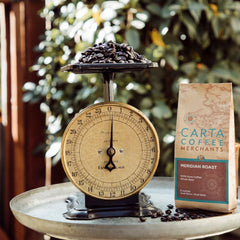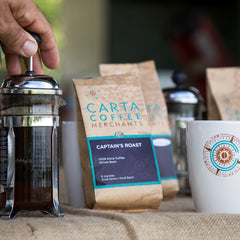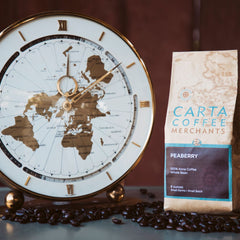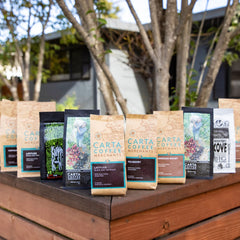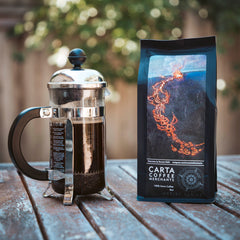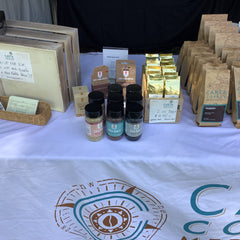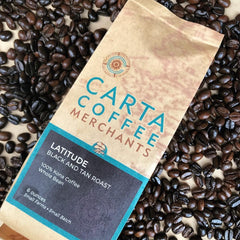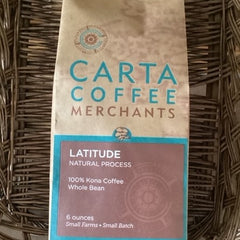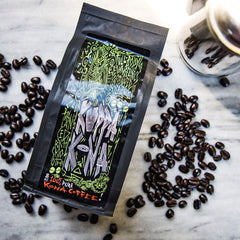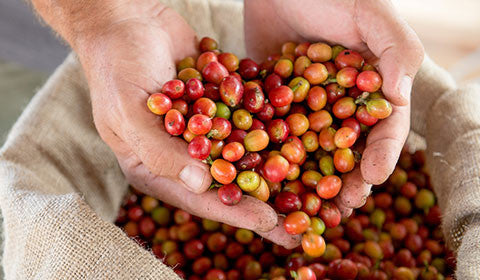Posted on

There’s nothing better than a good cup of coffee in the morning to get yourself going. That blast of caffeine rushing through your veins as you wake up and begin your day can help give you that boost of energy you need to get motivated. Caffeine is a stimulant that can help get you moving, but what if you’re not looking to stay up all night and just want a nice cup of coffee after your dinner?
Thankfully coffee also comes decaffeinated for those that want to enjoy a good cup of joe, but don’t want the side effects that come from ingesting high levels of caffeine.
Since caffeine is not added to coffee and rather is found within the coffee beans themselves, how does one brew a decaffeinated cup of coffee?
How Does Coffee Become Decaffeinated?
Caffeine is naturally found within coffee beans, so the removal of it is seen as unnatural by a lot of coffee purists. Coffee enthusiasts will also tell you that it dilutes and affects that natural flavor of the coffee beans and can strip the beans of some of their natural flavors and aroma.
There are a number of reasons why a person may choose to drink decaf coffee. Those reasons can range from health issues or complications from caffeine intake, trying to limit their overall caffeine intake, to just not wanting to feel the effects of caffeine on their body at certain times of the day.
When people think of coffee they typically think of a morning drink to help give you a boost of energy to get the day going, but there are a lot of people hat enjoy a cup of coffee after dinner or dessert in the evening. Drinking caffeine late at night can keep you awake longer and make it harder to get to sleep, which is one reason why many people opt for decaf coffee.
Regardless of your reasoning for wanting to stick to decaf, one question still confuses a lot of people, how do you remove the caffeine from something when it occurs naturally?
Thankfully, some really smart people figured out a way remove the caffeine from the coffee beans using a liquid solvent or, more recently, liquid CO2 to draw the caffeine out of the beans. While these processes can pull the caffeine from the coffee beans, they also pull with them some of the flavor defining aspects of the coffee as well as nutrients. And this is why coffee purists don’t necessarily like decaffeinated coffee.
Solvent Based Coffee Decaffeination
There are two different types of solvent-based methods for decaffeination, one that involves the coffee beans having direct exposure to the solvents and one that involves indirect exposure.
The typical solvents used in the coffee decaffeination process are methylene chloride and ethyl acetate. Both solvents are safe for human consumption in small doses. Ethyl acetate can be found naturally in fruits, however the amount needed in this process is too great to pull from natural elements, so it is typically synthetic. But you may see decaf coffee beans listed as “naturally” decaffeinated, which just means that ethyl acetate was used during the process.
Methylene chloride as a decaffeinating agent is not considered a health risk up to 10 parts per million according to the FDA. However, most coffee producers using this method try to keep their levels closer to 1 part per million. And while there may be a slight trace of this solvent left on the beans after being decaffeinated, roasting and brewing the coffee beans will eliminate the slight traces that do remain.
So now that we know the solvents used in the process, how are these liquids used to remove the caffeine in the coffee beans?
When it comes to the indirect-solvent method, the green coffee beans are soaked in hot water which allows the caffeine to be extracted from the beans. As we stated before, this can also remove some of the flavor elements and oils from the beans, so those will have to be separated from the caffeine and reintroduced to the beans so that they aren’t completely flavorless.
Once the beans have been soaked in water for a few hours, they are removed from the water and washed while the water is mixed with the solvent. The molecules of the solvent pull the caffeine molecules into them. At this point the water/solvent mixture is heated to allow for the solvent and caffeine to be evaporated leaving behind liquid that only contains the flavor elements and the oils. The coffee beans are then soaked in this water to help them re-absorb those essential elements.
In the direct-solvent method, the green coffee beans are steamed to allow for them to open up and accept the solvent into its pores. The green coffee beans are then mixed with the solvent for hours to pull the caffeine out of the beans. Once the caffeine has been removed from the beans, the solvent/caffeinated liquid is drained out of the tank and the beans are thoroughly washed to remove the solvent.
CO2 Decaffeination Method
While the above two methods are the ones typically used when decaffeinating coffee, another newer method has begun to be used as well.
This carbon dioxide method uses liquid CO2 under pressure to extract the caffeine from the coffee beans. The CO2/caffeine filled liquid is then moved to another tank where it is turned back into a gaseous state leaving behind the caffeine, which is discarded, but leaves the CO2 available for reuse.
Decaffeinated Coffee
Because of the different methods used to remove the caffeine from the coffee beans, and the fact that the caffeine is a natural part of the bean, any method you use is going to influence flavor. Because of this, many coffee purists like to talk down on decaf coffee, but for some people it’s the only option.
Thankfully these processes have been researched and studied for years so that the decaf coffee you’re getting today tastes way better than what you may have gotten years ago. And as technology continues to improve, new methods will emerge that will fool even the best coffee connoisseurs.
If you’re currently looking for a coffee with less caffeine but still full of flavor we recommend blending our 100% Kona Captains Roast with your favorite decaf beans.
